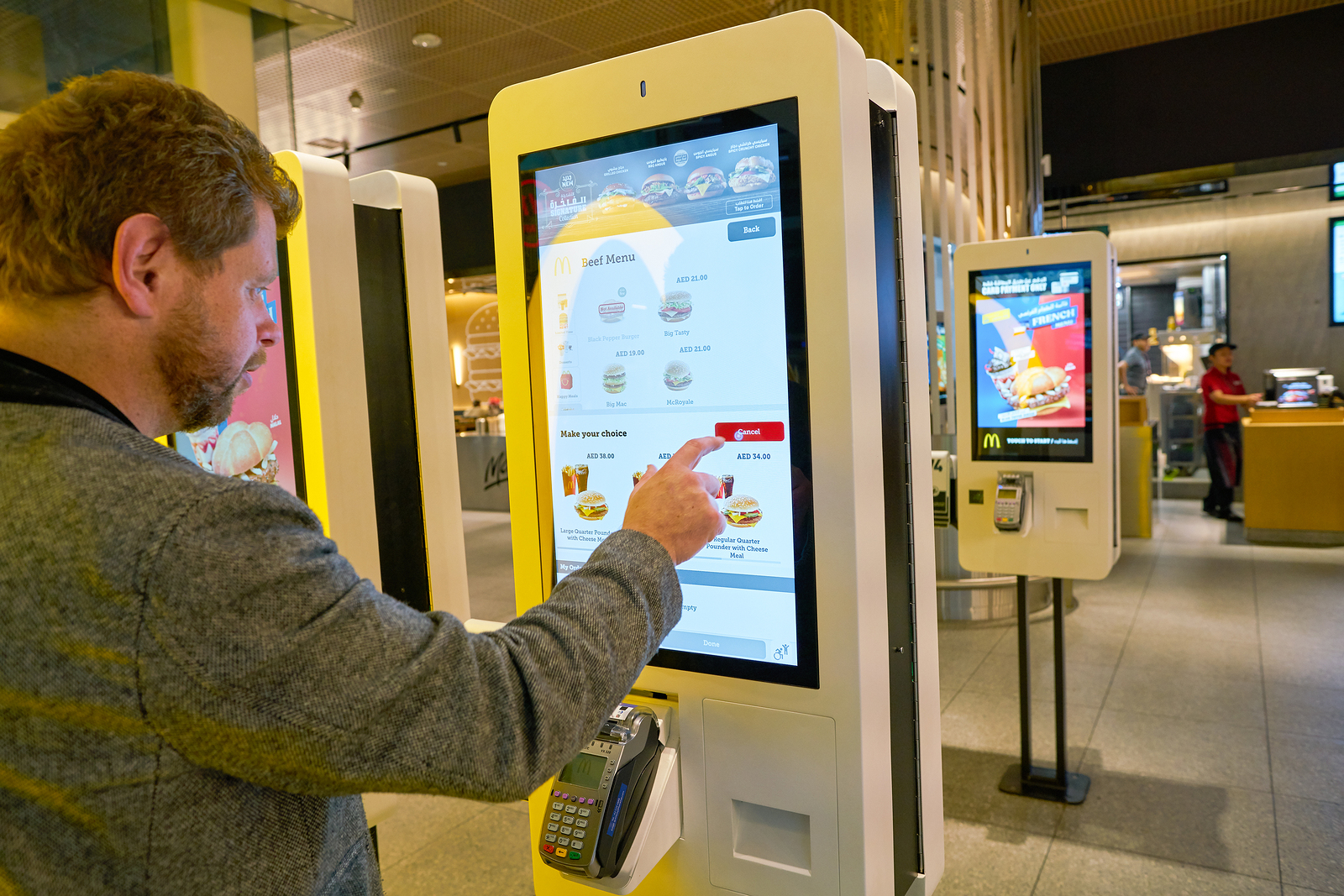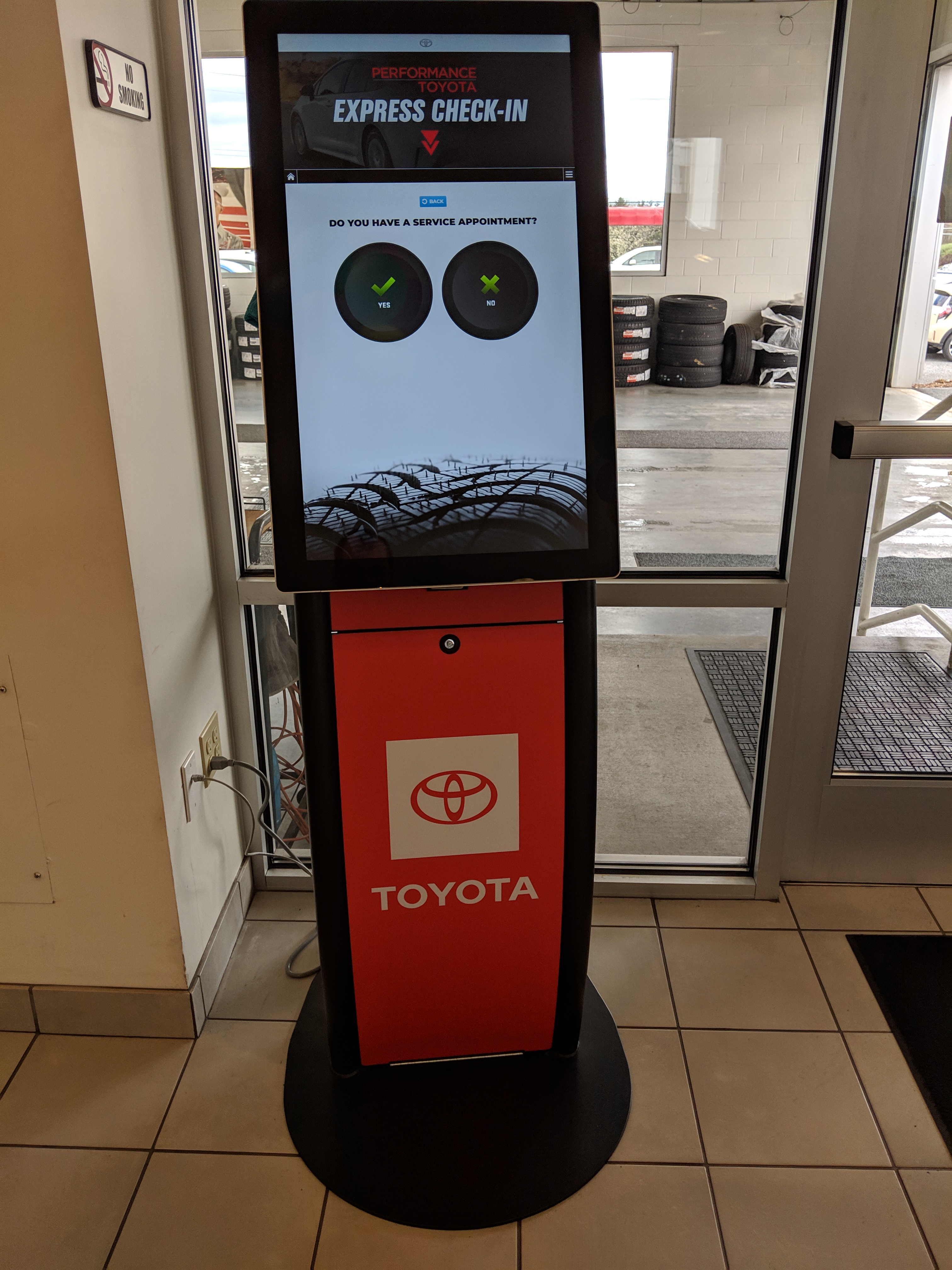Should I get a self service kiosk for my dealership?
Today self-service isn’t limited to ordering Wawa hoagies (it’s a Philly thing), and many dealerships have implemented self-service kiosks in their showrooms and service centers. These kiosks are meant to improve the customer experience through streamlined check-ins, payments, appraisals, and more.
When it comes to service, an automated, ATM-style kiosk outside the garage seems like an easy win. Implementing a self-service option could potentially promote upsells, increase your customer satisfaction index, and modernize your dealership, but are they really worth the investment?
Self-service sounds spectacular, but here at BitMoto we want to make sure it’s all it’s cut out to be before we make any recommendations.
Embracing the Internet
When’s the last time you took a look at a printed brochure? Can’t remember? Yeah, neither can we.
People don’t shop like they used to, and a vast number of customers prefer to browse products and services online. They want easy, convenient and immediate results, and the traditional automotive sales experience doesn’t quite live up to modern expectations.
They want easy, convenient and immediate results, and the traditional automotive sales experience doesn’t quite live up to modern expectations.
Enter self-service. The simplicity and interactivity of a kiosk replicates the feel of online shopping right within your dealership. Give the people what they want.
Vehicles and automotive maintenance services aren’t as easy to sell online as other consumer products, and often dealerships feel chained to the past. But a kiosk may help your businesses transform to match the modern world without going fully digital.
Targeted Upsells

A self-service kiosk has legitimate upsell potential. According to McDonald’s CEO Steve Easterbrook, after implementing kiosks the fast food giant found that the more people dwell, the more they select. He told CNBC in 2018, “There is a little bit of an average check boost that comes with [self-service kiosks].”
On the surface, food service doesn’t have much in common with the automotive industry, but why not look to McDonalds for sales advice? Their business is built on convenience and speed. Think of the Big Mac as an oil change and a large fry as a filter replacement. The fact is, selling is selling, and kiosks are selling more.
McDonald’s isn’t alone in the kiosk space. Within the past few years, Panera Bread started implementing kiosks in several markets. A case study by World Wide Technology reported that digital sales now make up 20 percent of overall business, and self-service kiosks have reduced bottlenecks to provide all customers with faster service. The report states, “Same store sales where the new technology has rolled out has increased at almost double the rate of stores not yet converted.”
13% of customers self select an upsell on check in using an automotive kiosk.
If those examples don’t convince you, let’s turn to GoMoto, a Philadelphia-based company that develops self service kiosk software specifically for the automotive industry. According to Todd Marcelle, GoMoto’s founder and CEO, 13% of customers self select an upsell on check in.
When using self service kiosks, customers seem to be upselling themselves. And if that’s not efficiency, we don’t know what is.
Sales Or Fixed Ops
The goal of a dealership is to provide quality customer service in an efficient way, turning a profit in the process. As discussed, today’s consumers expect immediacy; they’re used to Amazon Prime Now, Google right on their phones, and UBER rides ready by the curb. It’s harder than ever to satisfy the modern customer, and long lines, crowded waiting rooms, and busy product specialists don’t satisfy the need it now market. But, do kiosks?
Kiosks can make the check-in and payment processes straightforward, reducing overall transaction time and putting customers behind the wheel of their own shopping experience. As much as we’d like to convince ourselves that customers want to spend hours in our showroom, we have to be honest: They’d rather be driving home in their next vehicle sooner rather than later.
Kiosks get them closer to that goal by streamlining the sale, while taking pressure off of staff at the same time.
It’s important to make sure that using the kiosk to check in or check out is simple and self-explanatory. If an advisor has to carry the customer through the whole process, it defeats the purpose. A local sales manager we interviewed told us that at this year’s Digital Dealer expo in Las Vegas, several kiosk manufacturers were demoing their products. Many said sales consultants would walk the customers through every step. If that’s the case, what’s the point of the kiosk?
Potential functions of kiosks for automotive sales:
- Streamlined check in and check out process
- Browsing digital inventory
- Payments and financing
With that being said, there is another potential sales application for kiosks. Think about how many times a buyer has said, “My new car has to be a white sedan,” but they drove home in a black crossover. Seeing all the vehicles you have available, and having the product specialist on hand to answer any questions has been the way automotive sales have been conducted for decades, and there’s a reason that’s true.
A kiosk could potentially serve as a digital lot, with your entire inventory at the customer’s fingertips. Users could browse all their options using filters and search terms, select one they like, and then look out the window and it’s pulled up for a test drive. At that point, a product specialist would get involved for the necessary, more personal interaction. This could be a good sales application, especially in a store with a lot of inventory.
Smart Service
Some dealerships and manufacturers have embraced a new way to approach the service end of their dealership. Ford, for example, has implemented a 24/7 outdoor kiosk for service in select dealerships, developed by Ford in a partnership with Panasonic.
The service kiosk is a solution that streamlines the entire drop off and pick up experience to be self led and efficient. In a video uploaded to YouTube by Ford Media, customer Donovan Black explained that he used the kiosk because it was more convenient than standard vehicle drop off.
“I wanted to drop off my car the night before, because I had work in the morning,” Balck said, sounding almost relieved. “There was really no reason to even have to talk to somebody.”

To us, this seems like the best application for self service technology in the automotive industry. It checks all the boxes: convenience, customer satisfaction, and modernization. Ford says they hope their kiosk can do for dealerships what ATMs did for the banking industry.
That idea isn’t entirely far fetched, but Robert Atwood, a management instructor at the NADA Dealer Academy, says dealerships need to be cautious not lose the relationship between customer and service advisor. Atwood makes a good point, and we touched on it before: there will always be a need for one-on-one conversations when doing any kind of business. When you get work done on your vehicle, it can be reassuring to speak directly with the person or people who completed that work, so they can explain why you needed it and how much it cost. Face to face interaction ensures integrity and builds trust.
Could these smart service kiosks diminish that feeling to the point that its detrimental to your business? At BitMoto, we don’t think that’s likely. All it takes is a phone call if customers want detailed information, and the convenience of a kiosk is too hard to pass up.
A GM’s Perspective
As of April 2019 Performance Toyota, a dealership local to BitMoto, installed a kiosk, and we spoke to General Manager Jim Henne to get his perspective. Jim says he was convinced to install the kiosk because it’s simply the way that people are accustomed to transacting today.

Self service in action! – The service kiosk at Performance Toyota.
People are so familiar with kiosks being used in a variety of other industries it’s second nature to use them, so why not put them in the dealership? For Jim, it seemed like an obvious move. Some of the benefits he sees are “customer satisfaction, better efficiency during peak traffic times, high email capture rate, capturing customers preferred method of communication and having them opt in for text”. Jim predicts great things from his service kiosk, and he’s confident that customers will opt in for more services when the choice is right in front of them.
For Performance, the kiosk has proven to be a powerful tool for customer satisfaction and retention. When I asked Jim about the potential for upsells he told me that it is absolutely there, inline with the data from McDonalds, Panera and GoMoto. “This is the way we transact on a daily basis; they will upsell themselves!”
He’s confident that customers will opt in for more services when the choice is right in front of them.
Jim wanted to make a point that the kiosk doesn’t replace service advisors, but rather that it’s a tool that makes life easier for both advisors and their customers. Jim went on to tell me that he isn’t worried about updates or repairs, he sees longevity in the kiosk.
He understandably declined to tell us how much the kiosk cost the dealership, but our research shows that the figure could be somewhere around $1,000 – $1,800 per month, which may or may not include a retainer fee. Regardless of what Performance Toyota is paying, Jim seemed quite confident that it’s worth it.
Bitmoto Verdict: Approved! (Sorta)
Kiosks are an absolute no brainer for service! The available 24/7 interface, plus the potential to upsell services, streamline customer experiences, and take some stress off employees is incredible.
There is no real drawback to using kiosks for an automotive service application, so we wholeheartedly recommend investing in a self service kiosk for your service center.
As for sales, the jury is still out. There is simply not enough data to come to a solid conclusion. We can see the potential for upsells and convenience, but unless the dealership implements the kiosk perfectly, or the kiosk is perfect for the dealership, we’re just not sure the sales side is worth the investment.






